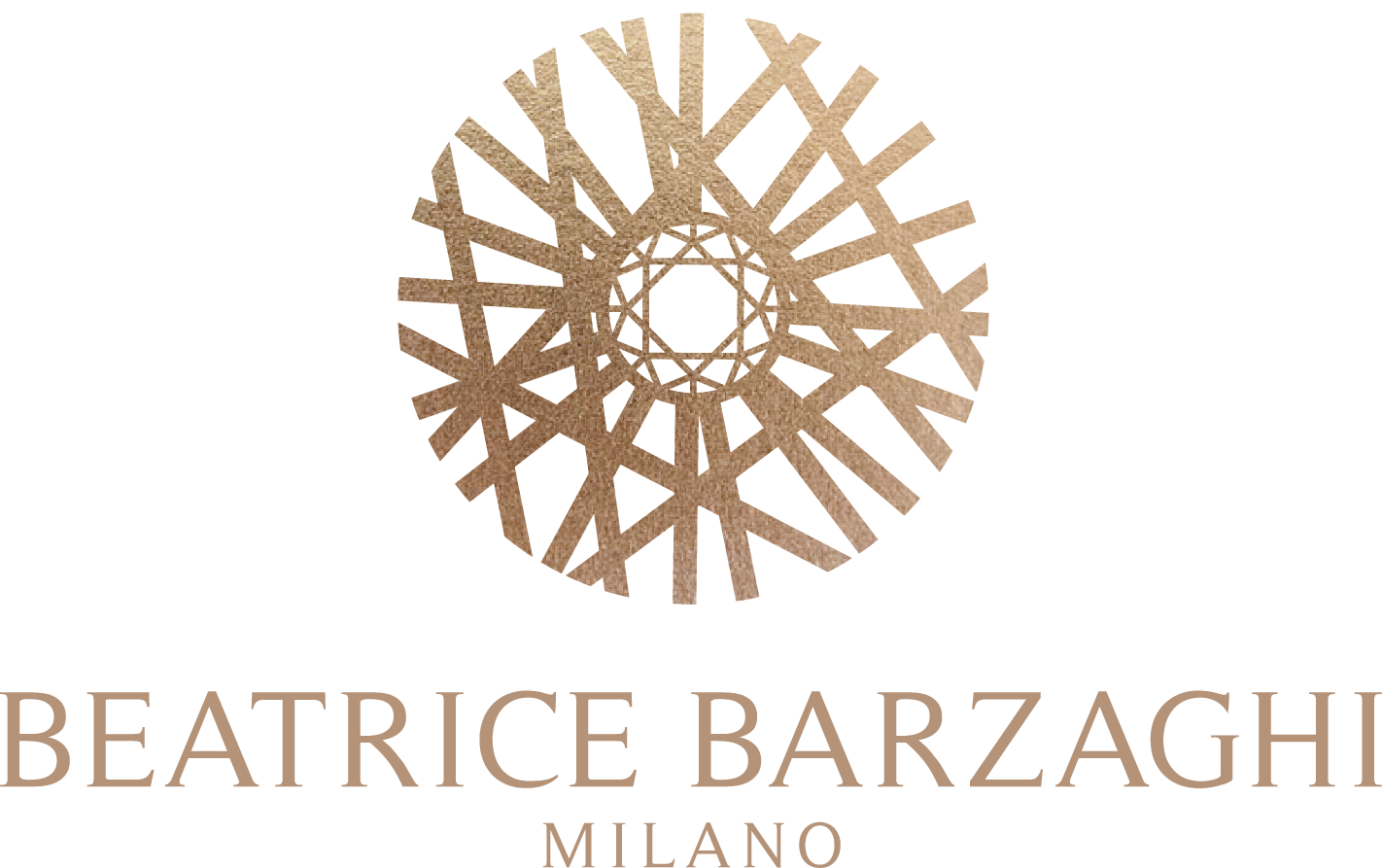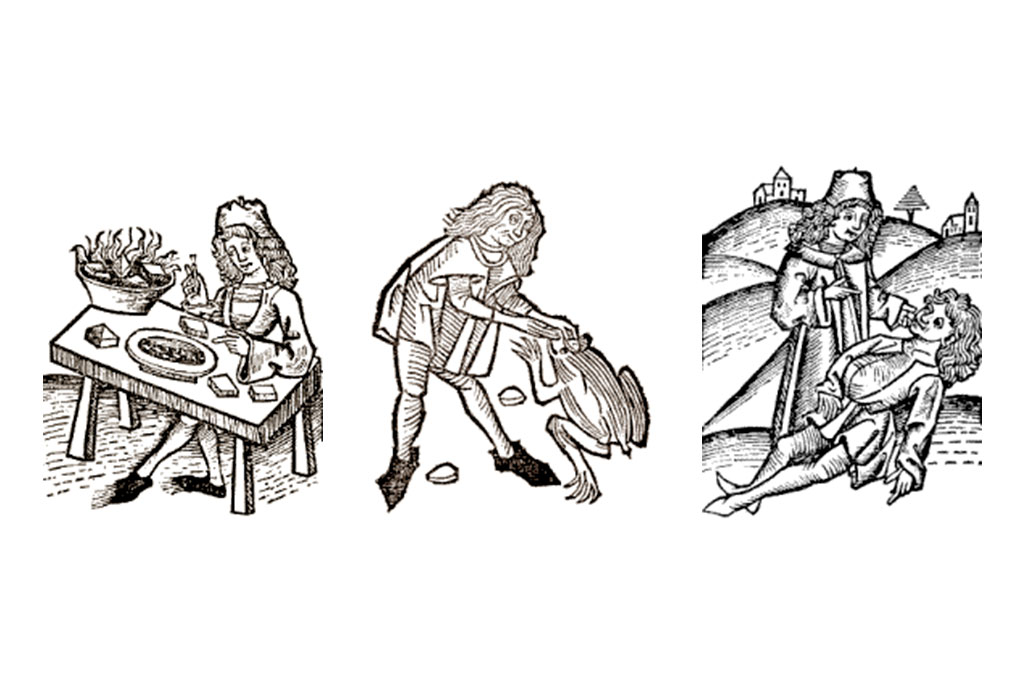
Medieval Lithotherapy illustrated in Hortus sanitatis, 1483.
HISTORICAL-ARTISTIC APPROACH
From the classical world to the Middle Ages, the properties and effects of minerals were the subject of religious, philosophical and alchemical speculation.
The Old Testament of the Bible describes the Rational of Judgement, an ornament set with 12 precious stones to symbolize the 12 tribes of Israel. This vestment was worn by the high priest when he had to make decisions of great importance. The Jews in particular believed that amethyst could help the priest connect with the Divine and make wise decisions.
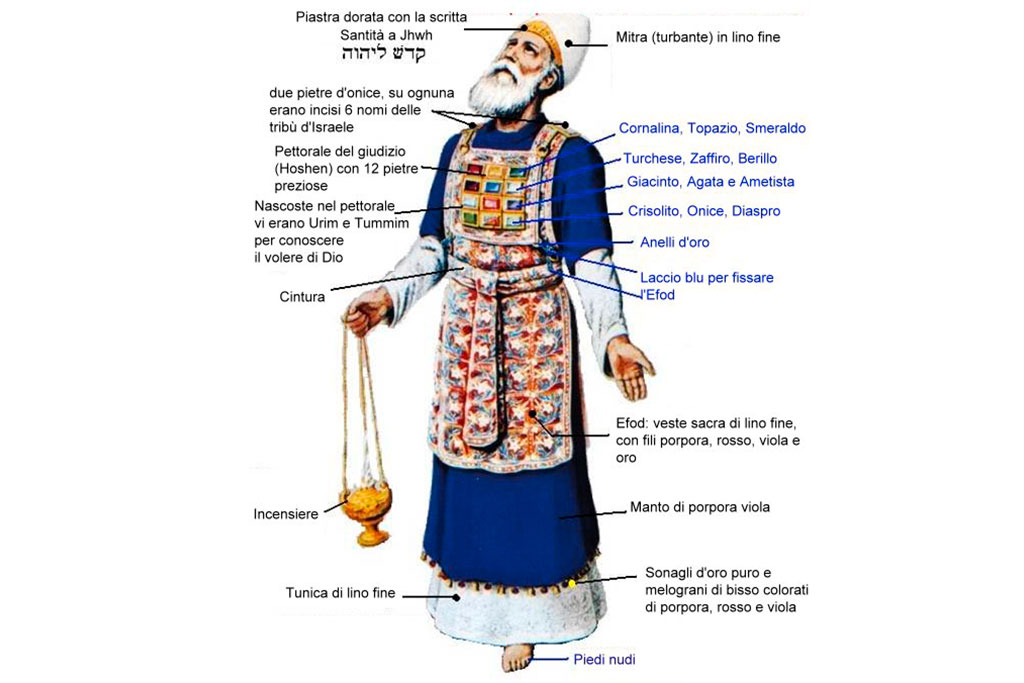
Rational of Judgement, ornament of the chief rabbi described in the Bible.
Christian culture associated a stone with each of the 12 apostles, and amethyst was also recognized as having the power to connect with the Divine, which is why it has always been used for the ornaments of bishops and cardinals.
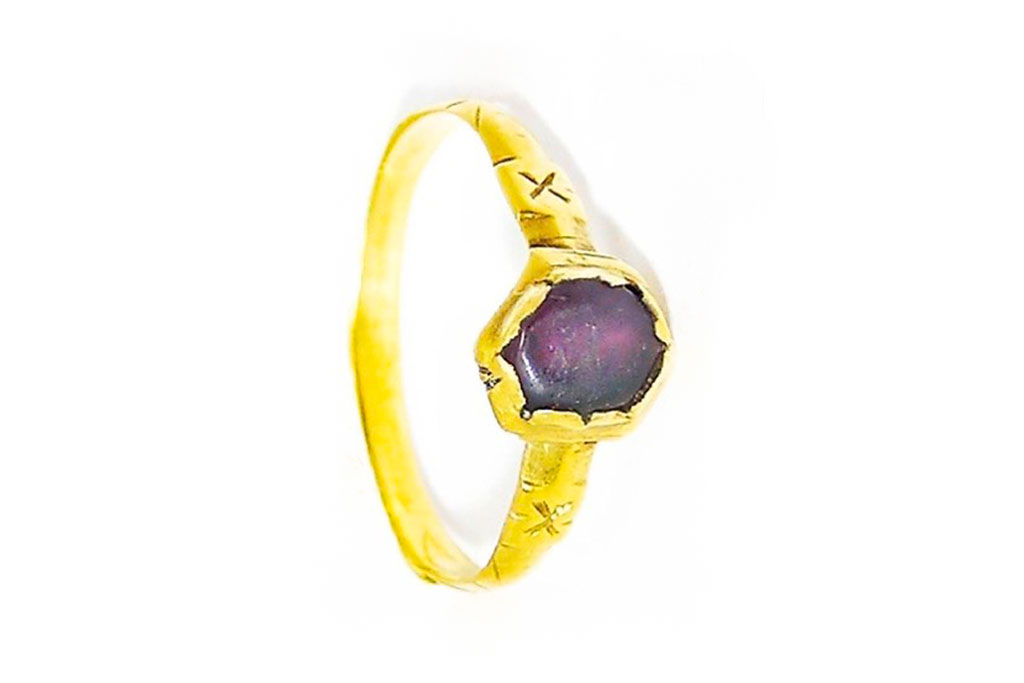
14th century amethyst and gold bishop’s ring.
It dates back to 1500 BC the ‘Ebers Papyrus’, a manuscript found in Egypt where therapeutic programs were reported that included the administration of precious stones and minerals such as alabaster, antimony, hematite, lapis lazuli, iron, lead, copper, natron, ‘statues scrapes’ and copper ‘green’.
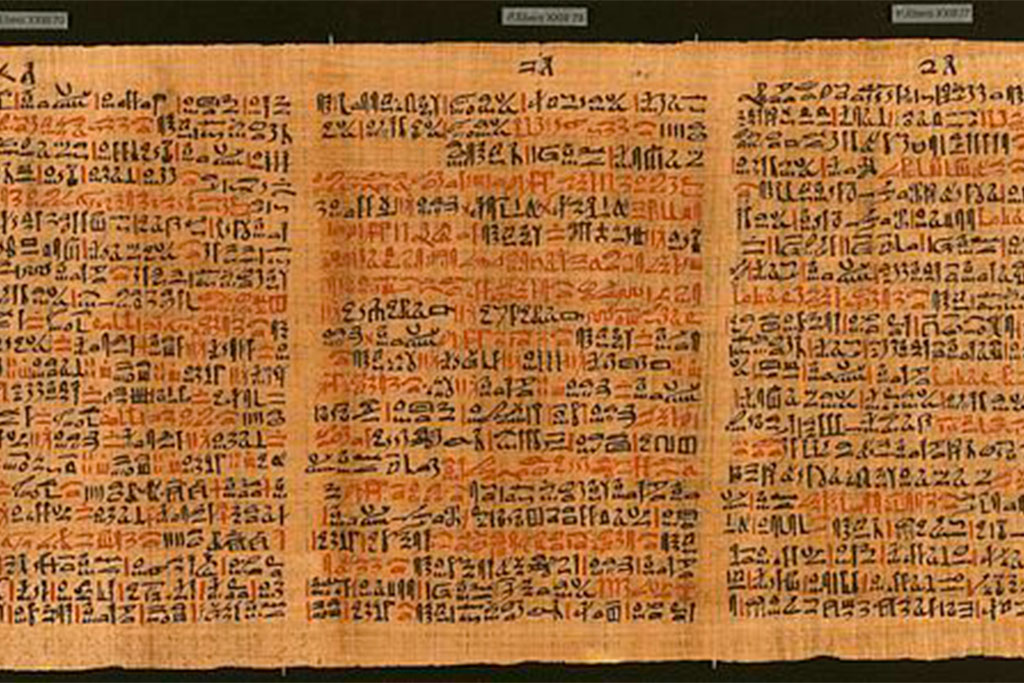
The Ebers Papyrus of 1500 BC provides Egyptian medicinal remedies containing gems and metals.
As for India, the Vedic texts of the Garuda Purana and the Graha-gocara Jyautisha, in which the origin and therapeutic characteristics of 14 gems are described, date back to the first millennium BC.
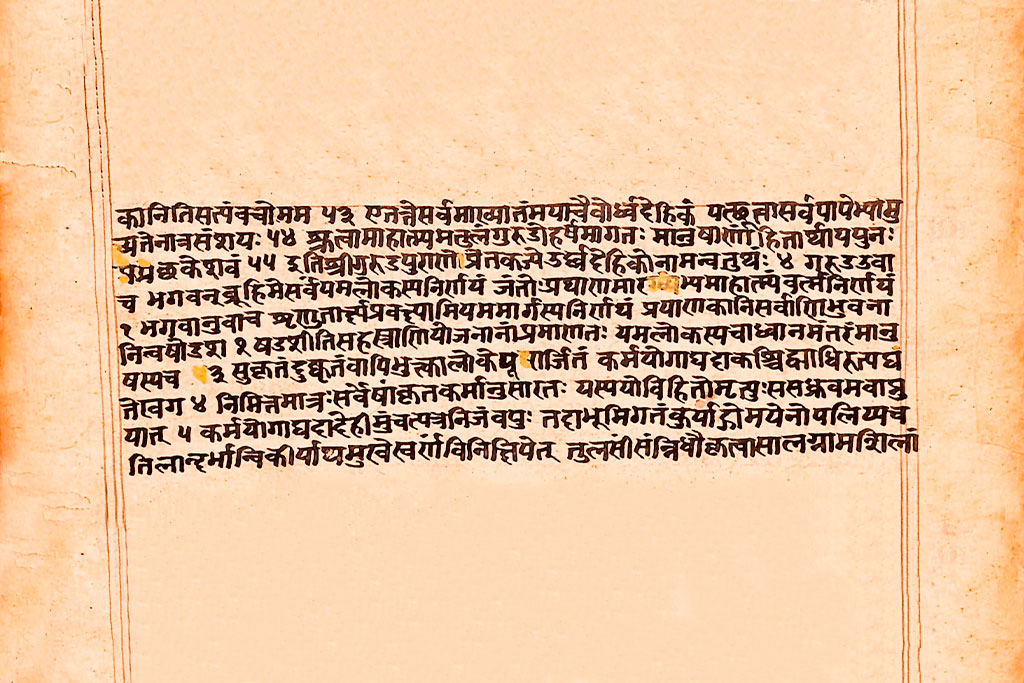
Garuda Purana, Indian text from 1000 BC illustrating the therapeutic properties of 14 gems.
Stones were acknowledged for their precise therapeutic influence, specific for each pathology, as reported in Pliny’s “Naturalis Historia” (books XXXIII to XXXVII). For example, in book 37, par. 28 of the Naturalis Historia, medical uses of crystals to cauterize and promote wound healing are illustrated; in par. 44 he reports the use of amber to heal tonsillitis and sore throats.
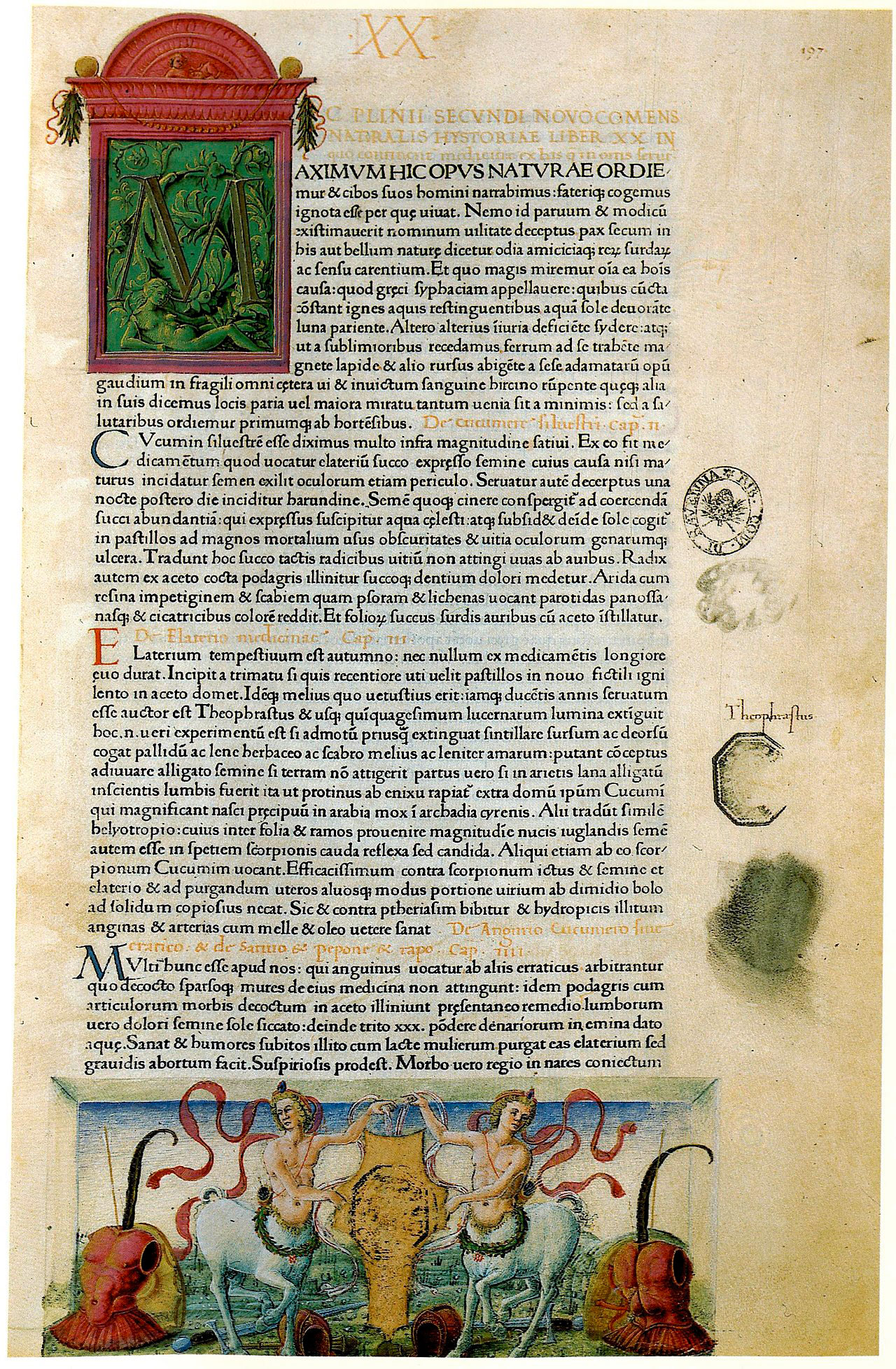
Pliny’s “Naturalis Historia”, editio princeps, Venice, Giovanni da Spira, 1469.
In Theophrastus’ Treatise “On Rocks”, in addition to a systematic treatment of the physical characteristics of rocks, the author refers in paragraphs 23 and 24 to the therapeutic effects of emeralds on the eyes.
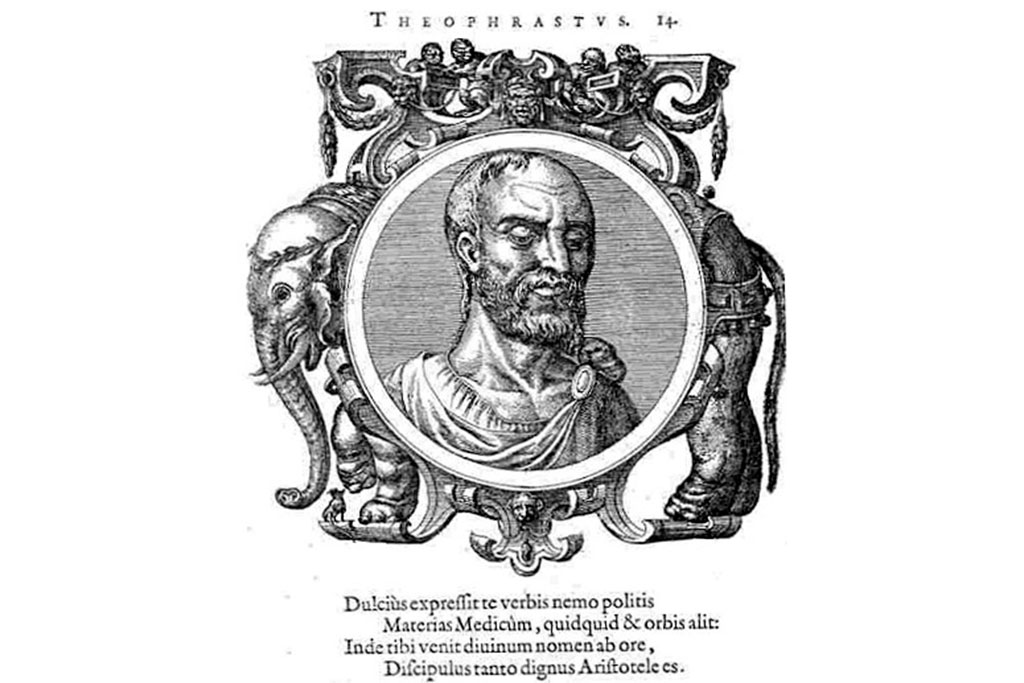
Theophrastus 371-287 BC, Lesbos-Athens.
Conversely, in ancient China, evidence of the use of minerals by traditional Chinese medicine is provided by the discovery of a medicine found in a family tomb of the Song dynasty, as described in the following article: ‘Discovery of ancient mineral medicine in the Lv family tomb of the Northern Song dynasty (1074-1111 ce)‘, Y. Gong C. Li Y. Zhang D. Gong (sept 2018). [“Calomel (Hg2Cl2) and calcined stalactite/stalagmite were identified, and they presumably served as a traditional Chinese medicine for curing ‘Jiaoqi’ disease which is often referenced in contemporary historical texts. This paper provides the first direct evidence for minerals being used for medical purposes in ancient China, and also proves its medical effect for relieving the symptoms of Lv Qianrong’s Jiaoqi disease. These findings further provide new clues for studying Chinese medical history.”]
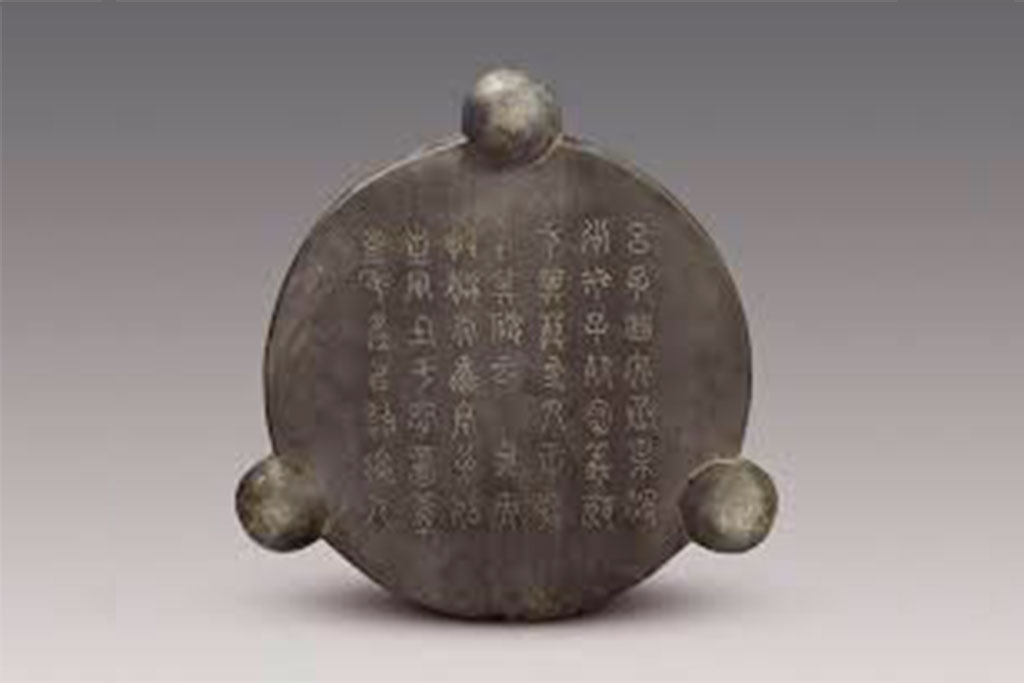
Container of mineral remedies found in China in a tomb of the Song dynasty 1074-1111 AD.
As for ancient Persia, the fundamental contribution of Avicenna (Ibn-Sina) (980-1037) expanded the boundaries of knowledge with his colossal work Kitab AI-Shifa, an encyclopedic treatise on philosophy and natural sciences consisting of eighteen volumes written between 1014 and 1020 and divulged in 1027, as well as the fundamental ‘Canon of Medicine’. Known above all for his studies in philosophy and medicine, so much so that he is considered the father of modern medicine, Avicenna was most likely born in a region of present-day Afghanistan, where he began his education on the writings of Aristotle. In the fifth section of Part II of the above-mentioned work, in the essay Mineralogy and Meteorology, Avicenna summarizes the entire Eastern knowledge about the Earth.
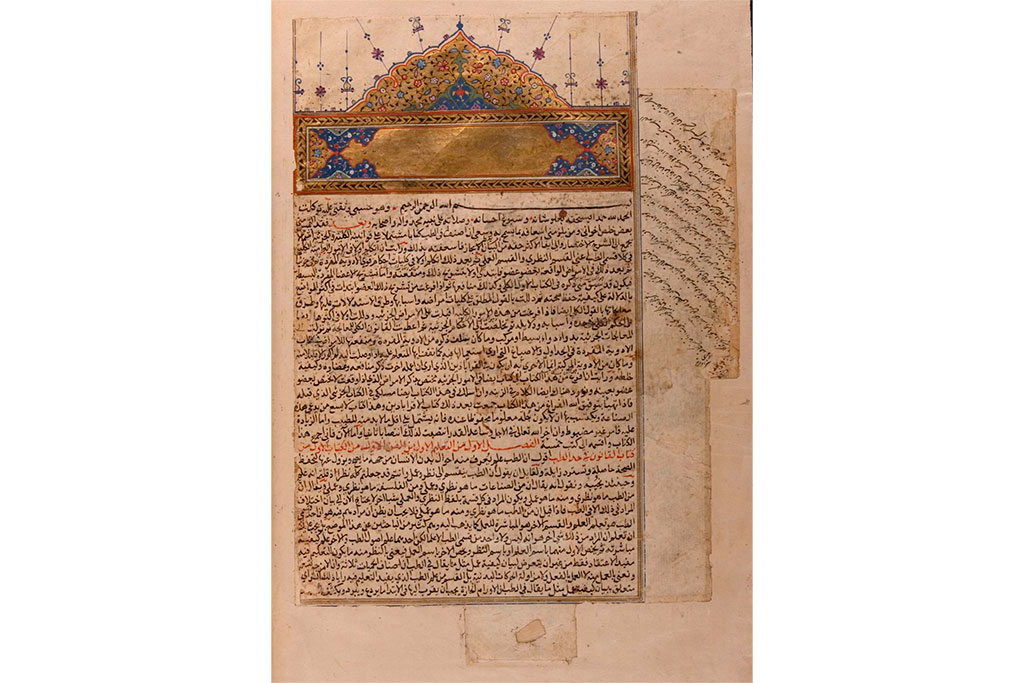
Avicenna, Canon of Medicine, 1597.
The only parts of his monumental encyclopedia, translated in medieval times, of which we have any record are the treatises on logic (Logica), philosophy (Sufficientia or Communia naturalium and Metaphysics) and psychology (Liber IV Naturalium). The last of these books comprises six chapters, each of which is dedicated to natural processes: 1) formation of mountains; 2) role of mountains in cloud formation; 3) groundwater; 4) origin of earthquakes; 5) formation of minerals; 6) different types of land. In this last chapter, the author divides the Earth’s materials into four groups: 1) stones and earths; 2) metals; 3) combustible materials and sulphureous minerals; 4) salts. Conversely, his Canon of Medicine is divided into five books (Book I, general anatomy and the principles of medicine; Book II, pharmacology; Book III, diseases of the special organs; Book IV, general medical conditions; and Book V, formulary), the fifth of which is a formulary of medicines in which he discusses, among other things, the specific mineral remedies suitable for specific diseases and is still used to guide scientific research (as shown in the article cited below).
“Ibn-Sina’s life and contributions to medicinal therapies of kidney calculi”, Pouya Faridi 1, Jamshid Roozbeh, Abdoali (full text here) September 2012, Iranian Journal of kidney diseases.
“Ibn-Sina (commonly known as Avicenna) is one of the most famous and influential scientists in the history of medicine. The Canon of Medicine, which is his most celebrated book in medicine, presents a summary of all the medical knowledge of his time. Ibn-Sina wrote a complete section about kidney calculi in his book. Totally, 65 herbal, 8 animal, and 4 mineral medicines are mentioned in the Canon of Medicine as beneficial drugs for dissolving, expelling, and preventing kidney calculi. Ibn-Sina introduced very advanced drug designing based on drug delivery, targeting the organ, deposition in the site of action, pain control, wound healing, clearance after action, and supporting the organ. Using Ibn-Sina’s ideas help scientists to choose better drugs with a historical background to reduce the cost of therapies and research projects.”
Albertus Magnus of Bollst a.D. (1206-1280), wrote the essay “De Mineralibus”. The work consists of five books, the first and second of which are devoted to stones, the third and fourth to metals, and the last to intermediates, this term meaning res naturales with the characteristics of both. The organization of the treatise is typically that of a medieval herbarium, with minerals and rocks arranged in alphabetical order, followed by morphological characteristics, physical properties and places of discovery. Beliefs about the magical and curative powers of certain minerals and stones finally enrich Albertus Magnus’ lapidarium, adding to the beliefs of the medieval age.
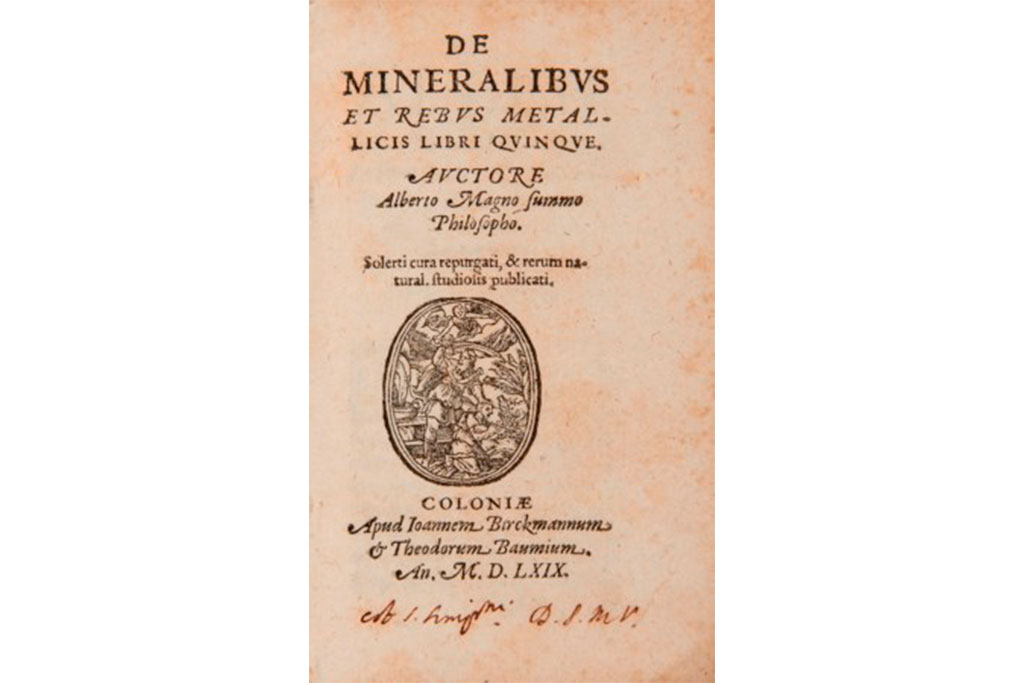
Albertus Magnus, De mineralibus et rebus metallicis libri quinque, 1569.
Georg Bauer (1494-1555), known by his Latinized name Georgius Agricola, is unanimously recognized as the father of mineralogy. His two essays De Natura Fossilium (1546) and De Re Metallica (1556) constitute the first scientific approach to mineralogy.
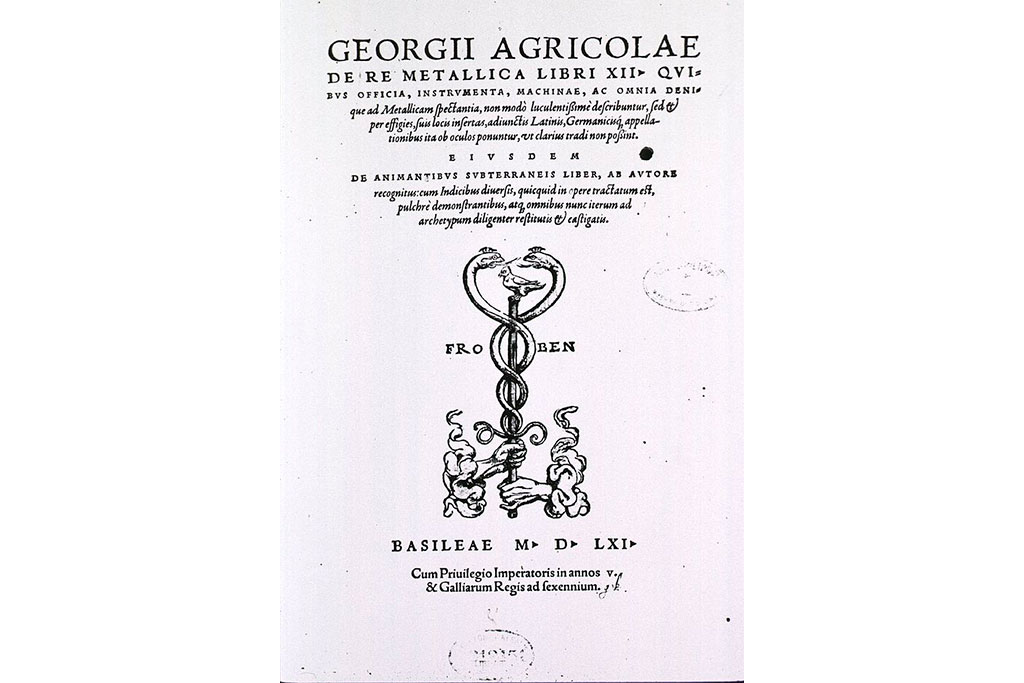
Georgius Agricola, De re metallica, 1556.
Conversely, there are cultures that have passed on their knowledge only orally for For example, the use of rock crystal as a balancing stone is found in the shamanic traditions of North America, Malacca and Australia, where it has been used for centuries; only recently has the American Indian tradition been transcribed (“American Indian secrets of crystal healing” written by Blue Eagle) in order to curb improper use by inexperienced therapists.
Contemplative crystal techniques and properties are almost identical in traditions as geographically far apart as Native Americans and Tibetan Buddhists.
